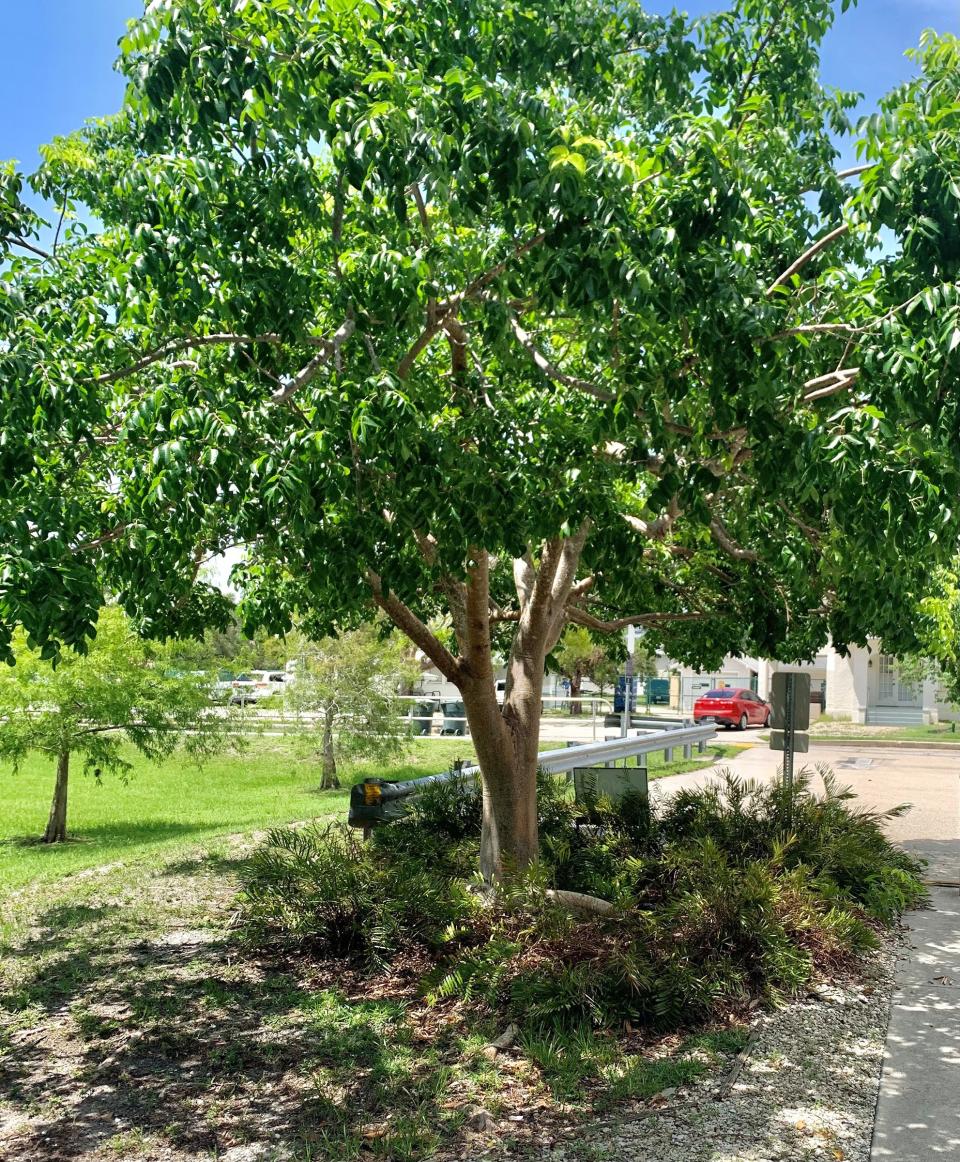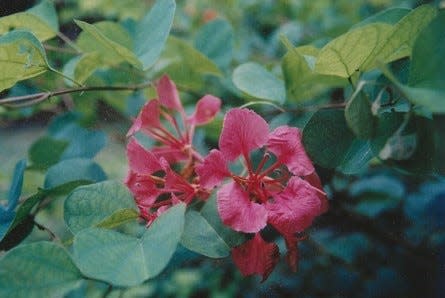Planting trees? These Florida natives have great personality
The backbone of a garden – as well as the world – is basic greenery that stays busy photosynthesizing and pumping out oxygen.
But there’s always room in our landscapes for plants with personality, especially if they’re native species. A fine example is devil’s walking stick (Aralia spinosa), a cold-hardy, deciduous shrub or small tree with personality plus. Almost as forbidding as its name, this striking plant features ferny blue-green leaves atop ferociously spiny stems. Even the leaf stems bristle with spines.
But devil’s walking stick boasts an army of admirers because of its abundant white springtime blossoms, followed in autumn by dark-purple berries irresistible to birds. Indeed, even in winter this species, which grows 10 to 25 feet tall, is exceptionally eye-catching. Established species form thickets of bare, upright, super-spiny stems.
Caution: a good deal of space is required to prevent devil’s walking stick from becoming a hazard. This plant performs best in light shade on organically enriched and mulched sites. Cuttings and seeds are usually available online.
Also one of a kind – but without a prickly disposition – is the gumbo limbo tree (Bursera simaruba), a briefly deciduous native up to 30 feet tall but usually shorter. Gumbo limbo is drought tolerant, wind resistant and pest proof. But its true claim to fame is the incredibly smooth, lustrous bark that peels off in papery shreds. Adding to the bark’s appeal are its colors, which range from a rich bronze to an aluminum shade of silver. Even more color is provided by half-inch red fruit and foliage that’s red when young. The tree’s small, greenish flowers are largely inconspicuous.

Ideal for warmer areas of Central Florida, gumbo limbo grows on almost any well-drained site in sun or light shade. Once established, trees require no fertilization, spraying or supplemental irrigation.
Propagation can be done by seeds, but gumbo limbo is generally propagated by cuttings of any size – even large branches. For this reason, it’s one of several "fence trees," which are largely tropical species that can be used to create living fences of foliage.
Ruben Osario, a writer who’s a native plant specialist, recommends using cuttings with diameters the size of a nickel. He says the resulting trees are more strongly rooted and sturdier than those grown from larger cuttings.
Speaking of native trees, did you know that Florida is home to a pair of fish-poison trees? Parts of both Jamaican dogwood (Piscidia piscipula) and soapberry (Sapindus saponaria) were thrown into lakes to stupefy fish. The fish then floated to the surface so they could be caught easily. That practice is now illegal.
Plant to ponder: Red orchid bauhinia

Red orchid bauhinia (B. galpinii) is a semi-vining shrub that can use neighboring trees to climb up to 25 high. It displays red or pink blossoms in spring and intermittently during summer. Provide organically enriched and mulched sites in bright light. Propagate with seeds. Plants are available online.
This article originally appeared on The Ledger: Planting trees? These Florida natives have great personality

